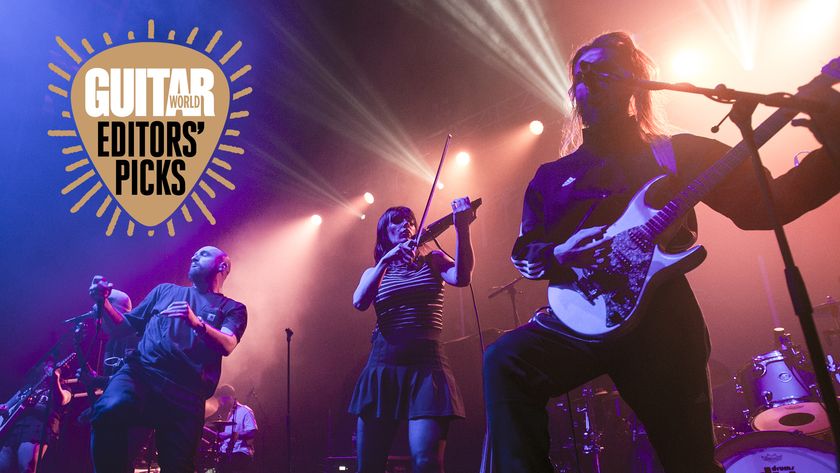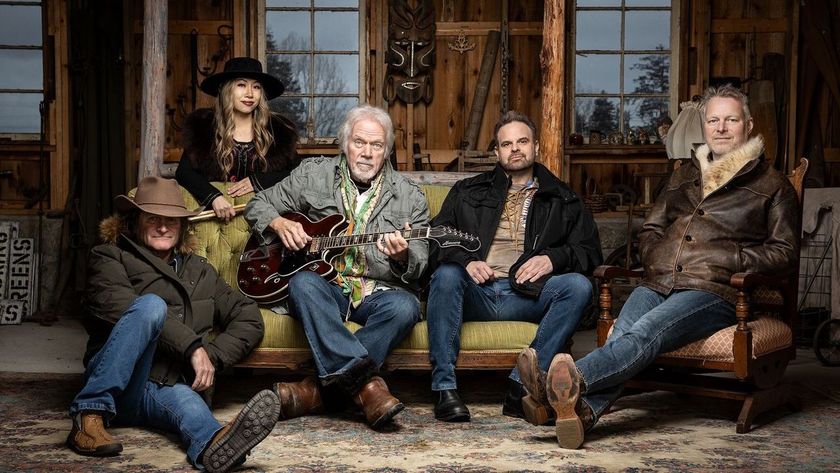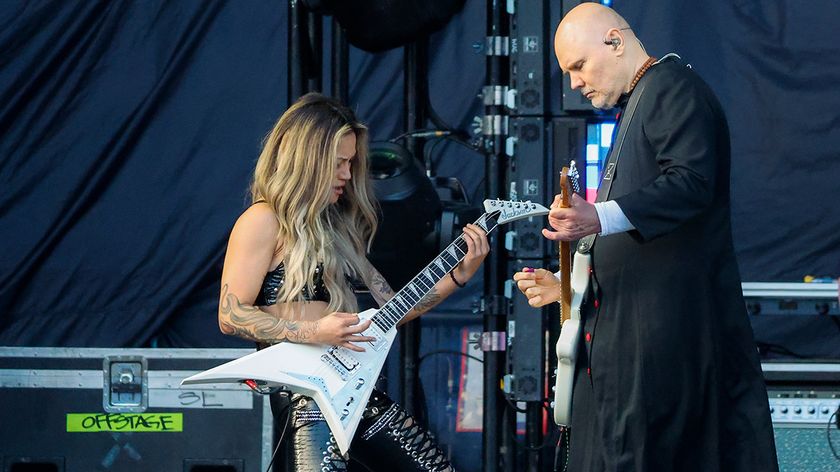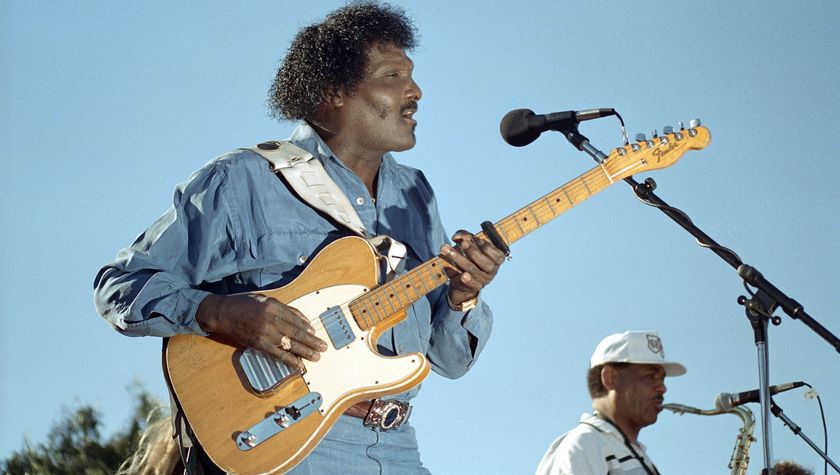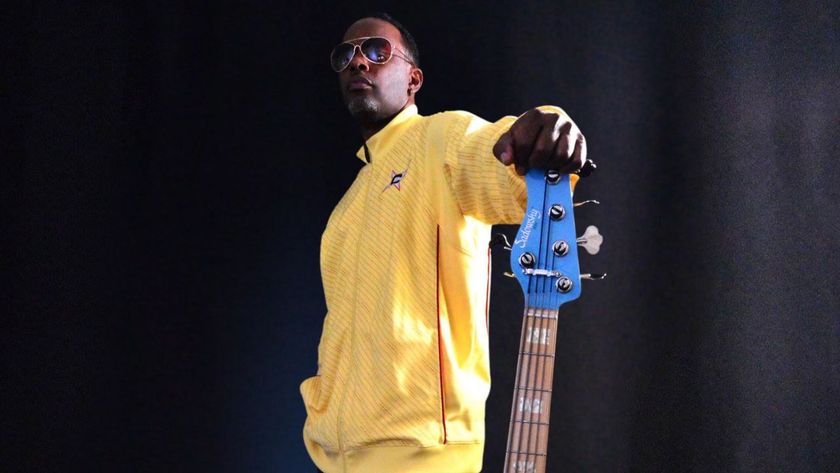Interview: John Shanks Discusses Producing Van Halen's New Album, 'A Different Kind Of Truth'

Award-winning producer/songwriter/guitarist John Shanks clearly recalls the first time he heard Van Halen.
“I was 12 years old, doing my homework, and I put their first album on,” he says. “All of a sudden, ‘Eruption’ comes on and you’re like, ‘What?’ No one had ever heard that. It freaked us all out. To me, it was Hendrix, Beck, Page, Gilmour and Clapton. That was it — the big five. And of course The Beatles. And then, one day, Van Halen.”
Growing up in New York City, Shanks would save money from his allowance and part-time job to continually add to his record collection. His diverse tastes — which would later pay off immeasurably when he launched his career as a songwriter and producer — covered a musical spectrum from jazz to folk to rock.
But, like most youngsters growing up in the 1970s and 1980s, Van Halen redefined the way he listened to and played guitar.
Shanks and his peers “would look at the picture on the cover and think, What is he playing? What guitar is that? I’ve never seen that guitar! It’s got a humbucker, but it looks like a Stratocaster. Well, six months later, everyone’s putting humbuckers in their Strats, and a year later, everyone’s putting Floyd Roses in their Strats and ruining vintage guitars instead of buying Charvels.
Nobody had heard tapping, nobody had heard a Variac on an amp. Nobody had heard this. All of us, whatever we were doing, it changed everything.”
Fast-forward a decade and John Shanks was on the road, eventually becoming the guitarist in Melissa Etheridge’s first band in 1988. Working with her lit a fire, and from there he began honing his craft as a songwriter and producer. He worked with Etheridge again on 1995’s Your Little Secret and co-produced 1999’s Breakdown, which received four Grammy nominations.
Get The Pick Newsletter
All the latest guitar news, interviews, lessons, reviews, deals and more, direct to your inbox!
Today, Shanks is at the top of the A-list: the go-to talent as a guitar player, songwriter and producer. Spend some time talking with him, and it’s easy to understand why: Music is his passion, his lifeblood and his reason for being.
His track record speaks for itself. He has produced and/or written 43 No. 1 singles, 119 Top 5 singles, 67 No. 1 albums, 172 Top 10 albums and more than 60 million records sold in the genres of rock, pop and country music. He is also a six-time Grammy nominee, including a win for Producer of the Year in 2005 for his work with Kelly Clarkson on the Top 10 single "Breakaway," Ashlee Simpson's chart-topping debut album Autobiography, which included the Top 5 single "Pieces of Me," and Alanis Morissette's album So-Called Chaos.
Shanks’ resume is a who’s who of the upper echelon of talent: Keith Urban, Chris Isaak, Celine Dion, Sheryl Crow, Santana, Fleetwood Mac, Michelle Branch, Bon Jovi — the list is endless. His most recent accomplishment: producing Van Halen’s A Different Kind Of Truth.
This month, Shanks begins work on his fifth album with Bon Jovi. A few weeks prior to joining the band in New Jersey for tracking, he called to talk about his recording and songwriting career, as well as his work with Van Halen.
Clive Davis called you “the father of that guitar-driven kind of pop sound.” Accurate?
Yeah, I think it is. I’ve always tried to stay humble, yet focused and driven, and I think with certain artists I maybe came up with a sound that led the path to what we hear today. What I still do is an extension of it, but I think I was part of that sound. It sounds egotistical, and I don’t want to come off that way, but that’s a sound that I think I helped create, absolutely.
What is “that guitar-driven kind of pop sound”?
We’re talking 1999 or 2000, when pop music had a lot of dance elements. It was “Hit Me Baby One More Time,” that period of music. [Producer] Max Martin is gifted and talented; I respect his records and I think he’s great, but there were no guitars on that record.
I’ll use Michelle [Branch] as an example. [Shanks produced Branch’s 2001 album, The Spirit Room, and co-wrote four songs, including the first single, “Everywhere.”] I was trying to figure out a way to create something with an acoustic singer/songwriter. We wanted to make it pop, and literally “make it pop.” I was and still am into electronica, so I programmed an Akai MPC 2000 to combine hip-hop beats with old drum-machine sounds mixed with acoustic guitars. Out of that record there came a sound where guitars would come into the chorus.
I applied the same layering of guitars and dynamics to Kelly Clarkson and other pop girls like Hilary Duff and Ashlee Simpson. Then Pink kind of took over, and a few years later we have Katy Perry. So did I help create that thing? I guess. Maybe I was lucky and I got there first. I don’t know.
How did you become involved with the Van Halen album?
I was working in my room, Studio C, and David Lee Roth was across the hall working on solo stuff. He stays in the studio. He’s always in there doing something. It’s like a boxer — he’s always training. He’s always writing and trying stuff and experimenting. He’s always creating. It’s just staying ready. So he comes in the studio and he’s working on a project. I don’t know what it was specifically. I introduced myself one day and we chatted a bit and became social. He’s very bright and communicative, and we would talk about his dogs, photography, songs, and the current state of pop music.
I’d met Eddie a couple of times [through a mutual colleague]. I got a call, I’m sure through Dave talking to Eddie, because I think collectively they come up with, “Let’s try this guy,” or “Let’s have a conversation with John.” I know they talked to a couple of other people too. Anyway, Eddie called. I went up to the house and met with Alex, Dave, Eddie and Wolf, and they talked about scheduling and what they wanted to do. Somehow we worked it out so we recorded at Henson.
Dave felt comfortable at Henson, I certainly knew the room, I think Eddie wanted to try it, and collectively, that’s what we ended up doing. That’s how it started. Eddie wanted to mix it at his house and work on it there [with engineer Ross Hogarth]. I’m sure they worked on it up there a bit more, but they have their process and you respect their process and doing whatever they need to do to get it there.
What was the tracking schedule?
Basically 12 to 12, five days a week. We’d work on the music during the day and Dave would come in and sing at night. They were long hours.
What can you tell us about the gear that was used to make the record?
Everything Eddie used you can buy at Guitar Center. The guitar he used predominantly on the record is the guitar he’s playing live. He used a Ripley guitar on one song [“Blood and Fire”]. On vocals I used a Neumann 49. Dave really likes that mic from when he was doing his stuff. He’s comfortable with it and felt good about it, and I tried to support anything they felt comfortable with.
Eddie’s an engineer. He understands the board and the chain and what he likes on his delay and reverb. They’re very knowledgeable and he’s very influential. Eddie is a master of the studio. He understands it. All I can say is that everyone has their process and everyone’s process is different, so I try to be respectful of their process. When you’re dealing with somebody this experienced and this far down the road as far as record-making, they know.
— Alison Richter
Read more from John Shanks and other producers and artists here.
Alison Richter interviews artists, producers, engineers and other music industry professionals for print and online publications. Read more of her interviews right here.
Alison Richter is a seasoned journalist who interviews musicians, producers, engineers, and other industry professionals, and covers mental health issues for GuitarWorld.com. Writing credits include a wide range of publications, including GuitarWorld.com, MusicRadar.com, Bass Player, TNAG Connoisseur, Reverb, Music Industry News, Acoustic, Drummer, Guitar.com, Gearphoria, She Shreds, Guitar Girl, and Collectible Guitar.
